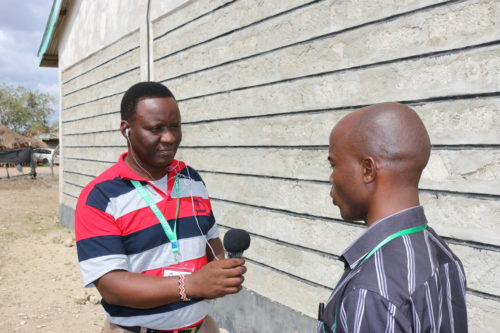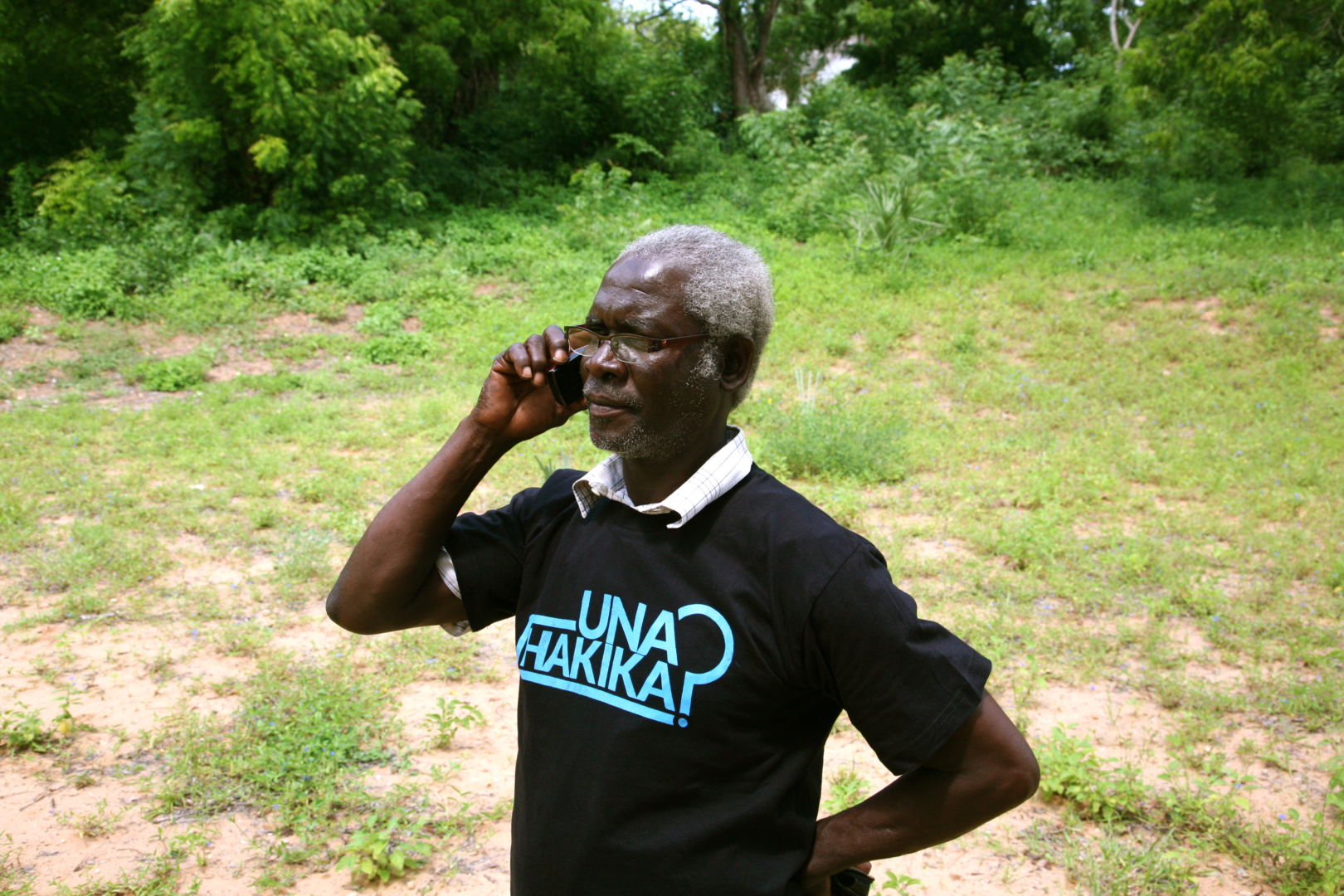Last week we looked back at Una Hakika’s beginnings in an interview with the Sentinel Project’s executive director, Christopher Tuckwood. Continuing the reflective conversation, we now look to the future of the project and the universal applicability of the lessons learned from it.
How will the Una Hakika project end and be handed over to the community?
That’s a good question. You know, I don’t like to think about the end of the project since Una Hakika has been a big part of life both for the Sentinel Project and for me personally over the past five years, not to mention how it’s helped people in Tana River. Of course, the good news is that just because external funding might end it doesn’t mean that Una Hakika has to end. Sustainability is always a really tricky challenge with any kind of development, humanitarian, or peacebuilding project, especially ones that involve technology or a lot of ongoing work. The simple fact is that these things cost money but at the same time we can’t exactly charge people for the service that we’ve built when we’re talking about violence prevention. When Una Hakika first started we couldn’t have gone to an atrocity-impacted community like Tana Delta and said that we would help to prevent it from happening again – but for a price. Not only would that be unethical and destroy any chance of building community trust but it also just wouldn’t make economic sense in such an impoverished place.
The good news is that sustainability is possible and we’re looking at a couple of different options for that right now, both of which transition Una Hakika to local control. One option is partnership with the Tana River County government, which would ideally see them financially support the project in exchange for expanding its scope to encourage citizen engagement and give the government a better picture of various issues affecting the local people day to day. Of course, this model is a bit tricky since Una Hakika’s non-governmental nature has always been one of its greatest strengths, considering the distrust that a lot of Kenyans have towards their government, but we’re confident that we can overcome that and find a model that works.
The other option, which I think is the most promising, is to fully integrate Una Hakika with Amani FM, the community radio station that we helped to create. Amani FM went on the air over a year ago in July 2017 and still has its own financial sustainability challenges but we think that eventually it could also help to sustain Una Hakika. This would be a natural fit since the two projects already operate out of the same physical base in the town of Garsen, share a common core focus on peacebuilding, and have very complementary approaches to using communications technology for development. A big advantage of Amani FM is that although it is a community radio station it needs to operate on a commercial basis in order to be sustainable. That means it can do things that Una Hakika can’t do by itself, such as selling advertising or doing sponsored programming for the county government. If we can build that kind of foundation for the radio station then Una Hakika can live on through Amani FM.
What were the lessons learned through the Una Hakika project that could be applied elsewhere around the world?
We learned a huge amount while operating Una Hakika and it’s really difficult to sum up here in a short space. Fortunately, we have a forthcoming report that will cover a lot of what we learned in Kenya and Burma (where the Peaceful Truth project was based on the Una Hakika model) both in terms of our research findings as well as lessons from day-to-day operations. We learned even more during 2017 when we expanded Una Hakika into new areas including Nairobi, where we saw how rumours and a project like this work differently in an urban versus a rural area.
One big lesson is that misinformation management projects can’t be set up quickly and they also can’t be shut down quickly. As much as something like Una Hakika is very much enabled by technology, rumours are a human phenomenon and they require a human-based response. Doing public outreach, making people aware of the system, and building up a subscriber base all take time. It’s not a matter of just creating some software or setting up a short code – you need to get out there and talk to people. That doesn’t happen quickly, especially not when resources are tight and you’re in a difficult environment. At the same time, once the system is in place, you can’t expect it to have an immediate and lasting effect. That takes time too, especially when we’re trying to encourage positive behavioural change with people becoming more critically minded. This was a problem around the 2017 election since we were asked by some donors to expand Una Hakika into new areas on a large scale with limited funding and really short timelines that would end almost immediately after the election, even though that’s when the greatest tensions and potential violence were expected.
Another lesson has been seeing the importance of interactivity. This is something that we always suspected intuitively since it made sense to our team that a two-way flow of information with the local community would help to build trust and get the best information to both us and them. This isn’t actually a very difficult thing to accomplish technologically but while I hate to be critical it always amazes me how many other peacebuilding and conflict monitoring projects boast about their use of technology like mobile phones but are actually just consuming data from citizens for some unclear purpose without returning much clear value to them. I tested a few such services myself from the user perspective in Kenya last year during the election and was amazed that in many cases they didn’t even acknowledge reports, let alone tell users what would happen with their information or how it would benefit them. Clearly, there isn’t much incentive for users to have a prolonged engagement with such services and come back to report more in the future. Who would call 911 or 999 if nobody ever answered the phone? That’s something that we’ve always worked hard to avoid with Una Hakika. When someone reports a rumour or incident to us we aim to give the fastest response possible, telling them what we will do with that information, when to expect results, and later following up with the individual or even entire communities. I think that’s universally applicable and our goal now is to replicate this model in other countries where it’s needed. We’ll have more news on that soon.

